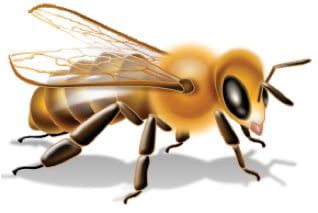“Sweet May hath come to love us,
Flowers, trees, their blossoms don;
And through the blue heavens above us
The very clouds move on.”
~ Heinrich Heine, 19th Century German poet, “Book of Songs”
The sparse showers of April have passed. A few sprinkles fell on Tuesday, even though May is the month for flowers and Mother’s Day. Sunday’s weather will please most moms, grandmas, aunts and special women in our lives. Warmer temperatures resume after our brief cold and windy period. Glancing outdoors at just the right moment, I caught sprinkles late Tuesday afternoon. The rainy season soon ends …
Recently at the Autry National Museum, I was offered a new perspective. A new exhibit recently opened – “Floral Journey: Native American Beadwork.” As a docent there, my training is ongoing. A question was posed by the curator: “Why do Native Americans often use floral designs in their beadwork?” The obvious answer – the beauty and aesthetics, colors, design and form, etc. – were not correct. These were secondary in value to native people. Flowers, for them, represent life, abundance and fertility. Every flower or blossom holds the potential for transformation into a vegetable, fruit and nut, i.e., food. Years ago, did Tongva women in the Crescenta Valley pick wild flowers and place them in clay vases? I like to think so.
Spring is a time of transitions. The cold winter months slip away as hot summer ones wait in the wings. Winter-bare trees grow new leaves. Flowers and blossoms abound. Take a look at our local mountains. In spite of so little rain, there is a fair showing of green. But the springtime picture is far from ideal and, in fact, has scientists extremely concerned. It is too quiet. What happened to the familiar sound of buzzing?
In the last five years, according to a joint EPA-USDA report, nearly a third of bee colonies in the U.S. have perished. Statistics are similar globally. This is considered by many scientists to be the biggest danger and threat facing humans worldwide today. No other single animal species plays a more significant role in fruit and vegetable production. Without the bee’s role in pollination, plants would cease to produce. The loss of this significant food source poses a threat to human survival. The reasons for the bee decline are many and possible solutions are rapidly being implemented.
Scientists report the demise of the bee is due primarily to pollution, rising water temperatures and a shrinking habitat. Interwoven throughout is the weather. Recent harsh winters in the Midwest decimated up to 70% of the bee population. Drought in California affects honey yield and bee populations; less rain means fewer flowers to pollinate. With so much at stake, immediate actions include increasing commercial bee production and changing pesticides and chemical use in farming. My brief summary cannot adequately address the future for bees.
Good “bee weather” into next week. Breezy and warm conditions with temperatures reaching 90 degrees on Mother’s Day are forecast. Include an invitation to our local bees – plant a flower garden. Consider it a gift to Mother Nature.
“Mankind will not survive the honeybees’ disappearance for more than five years.”
~ Albert Einstein
Sue Kilpatrick is a Crescenta
Valley resident and Official Skywarn Spotter for the National Weather Service. Reach her at
suelkilpatrick@gmail.com.

